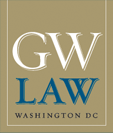Document Type
Article
Publication Date
2016
Status
Accepted
Abstract
This article is the first of two that grapple with a central policy challenge facing the administrative state: how to govern in times of dynamic change, when challenges, and opportunities to address them, are both shifting rapidly. The article suggests that, conceptually, process design that is likely to produce effective regulatory governance requires attention to three key distinct but interrelated variables – the actors who are or should be involved in program implementation in different capacities, the mechanisms (legal and otherwise) available to promote good governance, and the tools available to advance desired results. To demonstrate the value of the conceptual framework that we introduce here, the article uses it to assess one agency’s ongoing experiment in transforming its approach to regulatory enforcement, the federal Environmental Protection Agency (EPA). It explores the reasons for EPA’s judgment that a dramatically altered regulatory landscape requires the agency to transform its enforcement strategies. It then analyzes what EPA has characterized as its new enforcement and compliance paradigm, which the agency calls Next Generation Compliance. The article demonstrates how use of our conceptual framework to systematically consider the roles of the relevant actors, mechanisms, and tools, individually and in combination with one another, helps to identify beneficial regulatory options that alternative frameworks like the one EPA has used in designing the Next Generation Compliance initiative may overlook. The companion article builds on this foundation by further documenting how our framework will help to promote more systematic regulatory design in situations in which policy makers believe that a transformation or a new paradigm is needed, such as the situation EPA faces in enforcing the environmental laws. Our analysis underscores the value of our three-pronged conceptual framework in areas that extend well beyond environmental regulation.
GW Paper Series
GWU Law School Public Law Research Paper No. 2016-15 ; GWU Legal Studies Research Paper No. 2016-15
SSRN Link
http://ssrn.com/abstract=2734304
Recommended Citation
Markell, David L. and Glicksman, Robert L., Dynamic Governance in Theory and Application, Part I (February 18, 2016). FSU College of Law, Public Law Research Paper No. 791; GWU Law School Public Law Research Paper No. 2016-15; GWU Legal Studies Research Paper No. 2016-15. Available at SSRN: http://ssrn.com/abstract=2734304 or http://dx.doi.org/10.2139/ssrn.2734304
